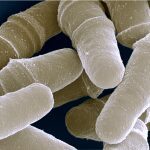About
The ability of an organism to interact with its environment is an essential part of life at the cellular, organismal and species levels. In many cases, rapid cellular adaptation involves modifications to chromatin, which is comprised of DNA, RNA, histones, and non-histone proteins. Chromatin structure and function are critical for development and differentiation as well as for responding to external challenges. In particular, DNA methylation, specifically 5-methyldeoxycytosine (5mdC), is an epigenetic mark that has emerged as a powerful means by which both prokaryotes and eukaryotes regulate gene expression. It plays key roles in processes ranging from development to adaptation to genetic stability. Furthermore, this signal can be converted into a genetic alteration through spontaneous or enzymatic conversion of 5mdC into thymine. Thus, the crucial functions of 5mdC are balanced with the “costs” of this modification, with important implications for organismal evolution. We study the presence and the function of 5mdC in fission yeast, as well as the molecular actors involved in the process.





